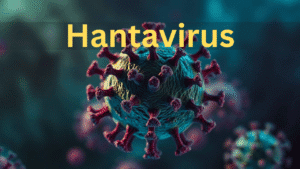Measles is a highly contagious viral infection that’s making a comeback in some areas, despite being preventable with vaccination. Recognizing measles symptoms early is crucial for managing the illness and preventing its spread. In this guide, we’ll break down the key signs of measles, how they progress, and what to do if you spot them in yourself or a loved one.
What Are Measles Symptoms?
Measles symptoms typically appear 7-14 days after exposure to the virus. The illness unfolds in stages, starting with mild signs that can mimic a common cold before escalating into more distinct features. Here’s what to watch for:
Early Measles Symptoms
The first signs of measles often feel like a routine sickness, but they’re the body’s initial response to the virus:
- High Fever: Temperatures can climb above 104°F (40°C), often spiking suddenly.
- Cough: A dry, persistent cough that lingers.
- Runny Nose: Nasal congestion or a watery discharge.
- Red, Watery Eyes: Known as conjunctivitis, this can make eyes sensitive to light.
- Fatigue: A general sense of exhaustion or weakness.
These symptoms usually last 2-4 days before the next phase begins. They’re easy to mistake for a cold or flu, but the combination is a red flag for measles.
Signature Measles Symptoms: The Rash and Spots
Around day 3 or 4, measles reveals its hallmark signs:
- Koplik Spots: Small white spots with a bluish center appear inside the mouth, often on the inner cheeks. These are a classic measles symptom and may show up 1-2 days before the rash.
- Measles Rash: A red, blotchy rash starts on the face typically behind the ears or at the hairline before spreading to the chest, arms, and legs. It can itch and lasts about 5-6 days before fading.
The rash is a defining feature, setting measles apart from other illnesses. If you notice these spots or a spreading rash alongside a fever, it’s time to suspect measles.
Other Possible Measles Symptoms
In some cases, additional symptoms may arise, especially as the illness progresses:
- Sore Throat: Discomfort or difficulty swallowing.
- Muscle Aches: General body soreness, similar to flu-like aches.
- Loss of Appetite: Reduced interest in eating due to feeling unwell.
How Measles Symptoms Differ in Children vs. Adults
While measles symptoms are similar across age groups, they can hit harder in certain populations:
- Children: Fevers may spike higher, and the rash can be more pronounced. Irritability is common.
- Adults: Symptoms might be more severe, with a greater risk of complications like pneumonia.
Unvaccinated individuals of any age are most vulnerable, so knowing these signs is key.
When to Seek Medical Help
Measles can lead to serious complications think ear infections, pneumonia, or even encephalitis (brain inflammation) especially in young children or those with weakened immune systems. Call a doctor if you notice:
- Trouble breathing or rapid breathing.
- A fever that won’t drop after several days.
- Confusion, drowsiness, or seizures.
- A rash paired with any of the early symptoms listed above.
Prompt action can make a big difference in outcomes.
How Measles Symptoms Progress
Here’s a quick timeline of what to expect:
- Days 1-4: Fever, cough, runny nose, and red eyes kick in.
- Days 3-5: Koplik spots appear inside the mouth.
- Days 4-7: The rash emerges and spreads, peaking in intensity.
- Day 7+: Symptoms begin to fade if no complications arise.
How to Tell Measles Apart from Other Illnesses
Measles symptoms overlap with conditions like rubella or roseola, but the Koplik spots and the rash’s unique spread (face to body) are telltale clues. Still, only a healthcare provider can confirm measles with a test, often via a blood sample or throat swab.
Prevention: The Best Defense Against Measles Symptoms
The measles vaccine (MMR) is over 97% effective at preventing the virus. If you or your child haven’t been vaccinated, talk to a doctor—especially with cases rising in 2025. Avoid contact with infected people, and wash hands frequently to lower your risk.
Final Thoughts
Spotting measles symptoms early fever, cough, red eyes, Koplik spots, and that distinctive rash can help you act fast and protect others. While most cases resolve with rest and care, the risk of complications makes awareness essential. If you suspect measles, don’t wait reach out to a healthcare professional for guidance.



